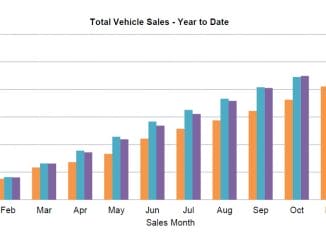Car Sales results for March 2025 have been released. Australians purchased 108,606 new vehicles during March, a decrease of 0.9 per cent on the same period in 2024, which was the best ever March result.
Sales of Plug-in Hybrid Vehicles (PHEV) during March were 380 per cent up on 2024, reflecting the impact of the removal of the Commonwealth Government’s FBT exemption for these vehicles from 1 April.
While overall sales are strong, the electric vehicle (EV) transition is not progressing at a pace likely to meet the long-term targets under the New Vehicle Efficiency Standard (NVES).
New Vehicle Efficiency Standard (NVES) is failing because politicians are out of touch
EVs represented just 4.9 per cent of total sales reported to FCAI, compared with 9.5 per cent in March 2024 and 6.8 per cent in March 2023 (noting that two non-FCAI EV brands are yet to publicly report their March 2025 sales).
“We are at a critical point in transitioning to a lower-emission vehicle fleet. But the reality is clear: Australian families and businesses are not shifting in large numbers to EVs,” FCAI chief executive Tony Weber said.
“While the supply of EVs is increasing, now with 89 models available in Australia, the demand for EVs is weak. The early adopters have acted but the rest of the vehicle-buying public has not followed.
“This is consistent with a number of other advanced markets around the world.
“The Australian automotive industry has long advocated for an ambitious and achievable emissions standard. Once again, questions must be asked about the Government’s modelling and in particular their assumptions about consumer acceptance of new low-emissions technologies.”
 Market leaders
Market leaders
Toyota was the market leader with sales of 20,541 during March, followed by Ford (8,232), Mazda (8,000), Kia (7,307) and Mitsubishi (7,265).
The Ford Ranger was Australia’s top selling vehicle with sales of 4,932 followed by the Toyota RAV4 (4,321), Toyota HiLux (4,081), Mitsubishi Outlander (3,005) and Toyota Prado (2,871).
For March 2025, sales in the Australian Capital Territory were up 4.6 per cent on March 2024 to 1,657; New South Wales was down 0.9 per cent to 33,491; Northern Territory increased by 3.3 per cent to 961; Queensland fell 6.8 per cent to 21,954; South Australia was up by 2.2 per cent to 7,143; Tasmania had an increase of 10.2 per cent to 1,774; Victoria was down 1.9 per cent to 29,541 and Western Australia increased 9.1 per cent to 12,085.
Car Sales Summary by Class:
Key Points:
- The March 2025 market of 108,606 shows a decrease in new vehicle sales of 1,041
(-0.9%) compared to March 2024 (109,647). There were 24.5 selling days in both March 2025 and March 2024 resulting in a decrease of 42.5 vehicle sales per day in March 2025. - The Passenger Vehicle Market is down by 3,448 vehicle sales (-19.6%) over the same month last year;
- the Sports Utility Market is up by 1,116 vehicle sales (1.7%);
- the Light Commercial Market is up by 1,493 vehicle sales (6.5%) and
- the Heavy Commercial Vehicle Market is down by 202 vehicle sales (-4.7%) versus March 2024.
- Toyota was market leader in March, followed by Ford and Mazda. Toyota led Ford with a margin of 12,309 vehicle sales and 11.3 market share points.








